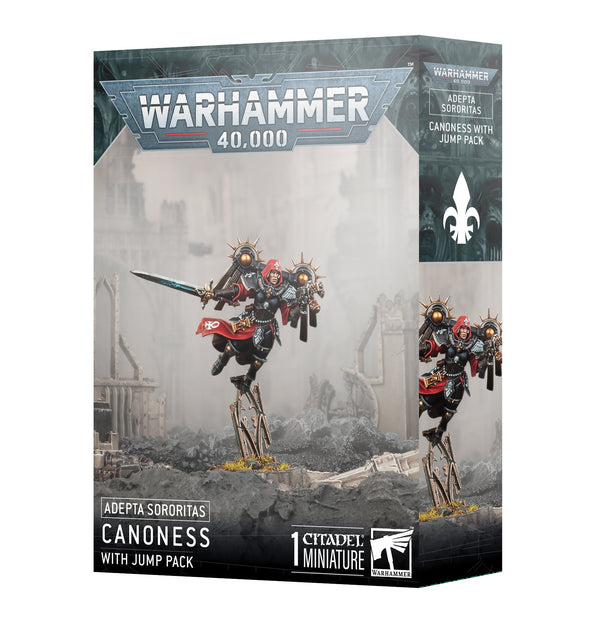Recommended Paint
Product title
Vendor
£19.99 | £24.99
Product title
Vendor
£19.99 | £24.99
Product title
Vendor
£19.99 | £24.99
Product title
Vendor
£19.99 | £24.99
Product title
Vendor
£19.99 | £24.99
Product title
Vendor
£19.99 | £24.99
Product title
Vendor
£19.99 | £24.99
Product title
Vendor
£19.99 | £24.99
Product title
Vendor
£19.99 | £24.99
Product title
Vendor
£19.99 | £24.99
Product title
Vendor
£19.99 | £24.99
Product title
Vendor
£19.99 | £24.99
Product title
Vendor
£19.99 | £24.99
Product title
Vendor
£19.99 | £24.99
Product title
Vendor
£19.99 | £24.99
Product title
Vendor
£19.99 | £24.99
Key Features:
- A fast, hard-hitting hero to lead your Adepta Sororitas in battle
- Customise her with a variety of weapons to suit your preferred enemy
- Ideal to lead highly mobile armies and harass enemy flanks
Many Canonesses of the Adepta Sororitas go to battle equipped with jump packs, using them to descend from the heavens and mete out the Emperor's justice. They are the greatest and most experienced warriors of their Orders, combining their strategic expertise with martial prowess.
This multipart plastic kit builds a Canoness equipped with a jump pack to keep up with the fastest elements of your Adepta Sororitas army. This warrior leads from the front, and can wield a two-handed Eviscerator or halberd, or carry a power mace or sword in one hand, and a hand flamer in the other. You'll also find three different head options to customise your Canoness further.
Product title
Vendor
£19.99 | £24.99
Product title
Vendor
£19.99 | £24.99
Product title
Vendor
£19.99 | £24.99
Product title
Vendor




